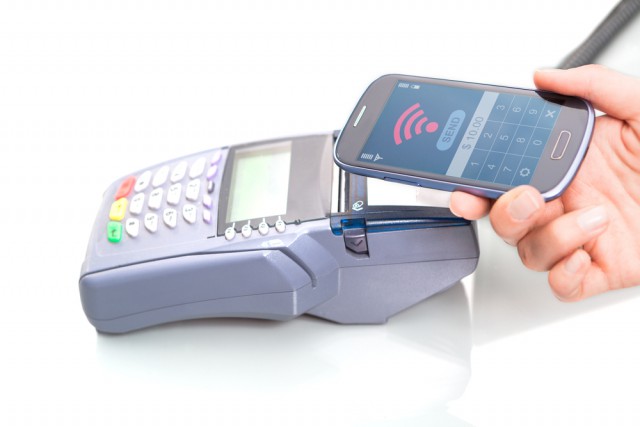Why you shouldn't embrace contactless payments on your phone

Changes in the payments industry are intrinsically tied to consumer behavior. How people pay, where they pay, and what they pay with, is determined by convenience.
As smartphones increasingly dominate the lives of consumers -- from how they search the internet to how they shop -- it is unsurprising that the next frontiers for payment innovation are widely anticipated to be within mobile commerce (m-commerce).
Most notably, there is a great deal of interest around the combination of m-commerce with contactless technology. Apple Pay, for instance, which allows you to pay contactlessly with your iPhone, has already broken ground in the US, and is set to be released in the UK shortly, no doubt to great fanfare.
But will the technology live up to the hype? Is the UK payments industry about to be fundamentally altered? And, if so, what implications will consumers need to consider?
What Makes Apple Pay So Special?
The first thing to remember when it comes to Apple Pay is that contactless payment is by no means new, or unique to Apple. The use of Near Field Communication (NFC) technology for payments is well established. Contactless cards have already been successfully trialled, adopted by card issuers, and embraced by UK consumers.
This is no surprise. The key to contactless’ success undoubtedly lies in its ease of use and its multi-usage possibilities. A contactless user in London for instance, can pay for a sandwich at lunch, a pint after work and their bus or train home, all with the same card. Following its success, it is unsurprising that large players are keen on making contactless payment part of the phone ecosystem.
Apple is simply trying to brand the NFC technology. No doubt, Apple is imagining customers will walk into a shop and ask the question "do you accept Apple Pay here?" which, in my opinion, is an unlikely future. With so many competitors adopting contactless (from card companies, to other tech schemes such as Android Pay), "contactless accepted here" is the sign I expect to see on shop-fronts.
All that being said, the combination of contactless with mobile technology will promise increased functionality, which may prove popular enough to encourage people to pay using NFC via their phones. Additional features such as the ability to see your balance on your phone screen as you pay, or receive an instant e-receipt, for example, adds another dimension to contactless bound to be popular with consumers.
Furthermore, extra authentication features such as the iPhone’s use of biometrics may be enough to convince safety conscious users of its security.
It's the End of the Payments Industry As We Know It?
Whether these features will be enough to completely alter the payments industry, however, is a different story. For the younger generation, where smartphone use is ubiquitous, mobile payments may be desirable. The vast majority of the population, however, will stick to what they know. Working in the online payment industry you sometimes forget that there are still people uncomfortable with mobile technology, or even paying online, but this is the reality -- so contactless mobile payments are a far stretch for this demographic.
The true mark of success for a payment method is how inclusive it is. The "war on cash", for example, has been underway for a very long time, yet cash is by far and away the most inclusive payment method, used internationally and across all sectors of society. Consequently, cash remains unchallenged as the most widely used payment method.
Payment behaviors are notoriously hard to change, and while contactless does hold some benefits, I doubt these are great enough to convert people away from their trusted methods of card and cash. Already there are indications that Apple Pay has not been adopted in the US on the scale that Apple had hoped for when it dubbed 2015 "the year of Apple Pay", with retailers often citing insufficient customer demand.
Unanswered Questions
More important than the success of the technology, however, are the issues raised by the combination of NFC with mobile technology, especially in terms of security.
Security in the payments industry is often a battle between usability and consumer FUD (fear, uncertainty and doubt). The branding of contactless payment may help tip the balance, as consumers feel they can trust a brand. However, in my opinion, consumers place too much trust in brands when it comes to payment security.
Branding doesn’t secure a device, and the introduction of a phone creates more issues than it solves. Who owns the network, and who can access it? Who created the app? How is the network being secured against malicious software? Do I breach my bank’s T&Cs by storing card details or other sensitive data on my phone or within a mobile app? Where do the liabilities lay if something goes wrong? These are questions I cannot answer, and in security the more unanswered questions there are, the more dangerous it usually is.
However, the most important question for me is: who is responsible? If my wallet is stolen, I phone my bank and cancel my cards. But if my phone is stolen, who do I call? My bank? My mobile network provider? Apple?
Consumers may trust brands enough to overlook these issues, but they shouldn’t. Until these questions are definitively answered, I’ll be probably pressing "deny" to NFC payment technology on my phone.
Jens Bader is chief commercial officer at Secure Trading.
Published under license from ITProPortal.com, a Net Communities Ltd Publication. All rights reserved.
Image Credit: scyther5 / Shutterstock
